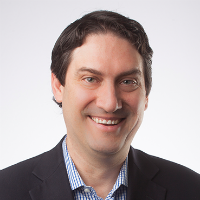For some who’ve been in the industry a long time, the world of consultancy represents an attractive alternative to their previous work, giving them an opportunity to use the skills and knowledge they’ve developed over the years to help others develop their businesses. But what motivates someone to strike out as a consultant, and what’s the consultancy life really like?
VAN spoke to three people who have started their own consultancies to find out how they started in consulting, and what they make of the challenges and opportunities of the consulting world.
Starting Out
It’s not uncommon for people within the industry who find themselves between jobs to take up consulting work as a temporary gig, and for Prohaska Consulting CEO and Principal Matt Prohaska, that’s where it all began.
“The reason our company is called Prohaska consulting isn’t because I have too massive an ego, but because like many in our industry I was consulting between jobs,” he said.
Prohaska’s first foray into consulting was somewhat temporary – he and his team worked with a few dozen clients between mid 2011 to early 2013, but a point came where a potential project with the New York Times fell through and other projects came to an end.
At that time Prohaska was presented with another opportunity working with Hearst CRO Todd Haskell, training people in running programmatic internally themselves as part of buying teams.
However someone else was hired as head of advertising at Hearst with a different vision from Haskell, meaning Prohaska’s job was eliminated, and thus he returned to start up ‘Prohaska Consulting 2.0’.
“Frankly we opened our doors because my job was eliminated there, so a little bit of necessity is the mother of invention. It wasn’t some grand scheme that I pitched to a VC, It started off as me and we’re self funded,” he said. Since then, the company has grown “one client at a time, one team mate at a time”.
Wayne Blodwell, CEO of The Programmatic Advisory, moved into consulting after having a taste of it at a previous job. Blodwell worked on a consulting team that was created within iProspect while he was working there.
“Our first project was working with an advertiser to consult on and evaluate their tech stack, because they wanted to license it themselves. These days that’s quite common but back then it was unheard of. We spent two days within their offices meeting different stakeholders, about eight hours of meetings each day,” he said.
Blodwell said this initial experience attracted him to the idea of setting up a consultancy. “I thought to myself, consulting’s great because often when you’re giving advice, people think there’s something attached to it, like a hidden motive. But with this job we did three and a half years ago, it was just pure consultancy, there was nothing else beyond the project fee. It was very liberating to have a relationship where it was completely trusted at all levels. That’s what inspired The Programmatic Advisory really.”
Four Stars Consulting director Steve Doyle on the other hand had neither the necessity nor the taste of consulting that the other two had, but saw it as an attractive option after nine years running commercial output at Inskin Media.
“After nine years in one role I wanted to do something else, and wanted to get back to my start-up roots which is probably where I’ve enjoyed my time more, when it was us against the world!” he said. “One of the options available was the concept of being a consultant. I’ve got fifteen odd years in media sales and running media sales teams, so it was a question of how I harness that into helping add value to other companies.”
“Back-to-Back-to-Back Meetings”
It’s in the nature of consulting work that there’s no real ‘typical day’, as working with a range of different clients with different goals and challenges makes the work very varied, but those VAN spoke to were able to go give a broad overview of what the consultancy life is like.
Four Stars Consulting is still in its early days, so most of Steve Doyle’s time has been spent in and around London finding where the opportunities are and keeping up with the industry.
“I try and have two or three meetings a day when I come up to London to either talk to businesses I’m working with, or potential new clients, or to just be having conversations with people,” he said.
“A lot of opportunities from being out there and networking, and having conversations with people you know can lead to work as much as and other tools you have. It’s about being present, being in town, and trying to make use of personal contacts I have,” he explained.
Once projects have been set up and the work actually begins, the days can be very intense. “A typical day as a consultant is spent at someone else’s office, you don’t have your own desk, only your client’s. You often have back-to-back-to-back-to-back meetings to try to maximise the time you’re there,” said Blodwell. “You’ve got to be incredibly punctual, and you’re trying to be on top of your game all day, and they can be quite long days.”
As a consultancy grows though, the work can become somewhat more focussed as new staff are brought in. “When one person’s doing everything, you have a mix of business development and actual project work,” said Prohaska. “So you’re wearing all the hats, and as you’re able to scale, you can split the revenue and bring on some help, so you can start taking off some of those hats!”
Challenges and Frustrations
While all those VAN spoke to enjoy consulting, as with any form of work there are challenges. Doyle said the main challenge for him in the early days of setting up a consultancy is making sure he’s working with companies which fit his skills and experience, ensuring he’s working specifically with businesses where he can really add value.
Another important part of choosing which clients to work with is making sure there aren’t any conflicts of interest.
“Obviously we will never represent two tech companies at the same time in the same region to the same people, that just makes no sense,” said Prohaska. And when it comes to managing projects in different sectors, it’s important to keep teams separate. “As an example we were helping an automotive company to evaluate their DMP and we were occasionally looking at their DSP at their request. Meanwhile, we were helping a DSP with business development efforts. Those were two completely different teams, one had nothing to do with the other, and in fact the DSP did not win the business from our automotive client.”
Working with clients can be tricky at times as well: “Sometimes getting the information you need can take longer than you’d think – you need someone at the client internally to be a champion for the project to help you do that,” said Blodwell.
And at the end of it all, often a consultant’s hard work will come to nothing. “Sometimes they don’t take your recommendations on board and sometimes internal politics gets in the way,” said Blodwell. “I know some consultants get frustrated by that, but I tend to think I’ve done my best, and that’s all I can do.”
Opportunities for the Future
Despite these challenges and frustrations, all of those VAN spoke to were very positive about their line of work, and believe prospects are bright in the consultancy world.
Blodwell said that there is “healthy competition” within the sector, but that everyone is very supportive of each other. “We’ve had businesses come to us who aren’t quite right for us and we’ve referred them to other consultancies, and vice versa,” he said.
Changes within the ad industry also throw up potential new opportunities for consultants. The move towards brands “in-housing” their programmatic media buying is one of the most prominent, and presents both an opportunity and a threat. The opportunity comes from how brands may turn to consultants to help them in-house their programmatic operations, but once major brands have developed that talent internally, they might believe they no longer need outside help.
Blodwell however said that full in-housing is only happening on a very small scale. “I’d say ten percent of brands want to in-house, and about two percent can actually in-house,” he said. He also believes a lack of talent will restrict the level of in-housing. “The physical number of people who are very good at programmatic advertising is limited, there aren’t thousands of them. We will see some brands which bring everything in house, but I think those will be in the single digits.”
And even when companies do have talent in-house, they often value having a fresh pair of eyes to give a different perspective, said Blodwell.
At the other end of the spectrum, fragmentation and diversification of the media landscape might open up new business as smaller companies look to consultants for help. “There are a lot of small businesses and content creators that need better output in how they make money out of the things they’re producing,” said Doyle. He said consultants like himself can find business by looking beyond “the banks and the car manufacturers, and the traditional big boys of advertising”.







